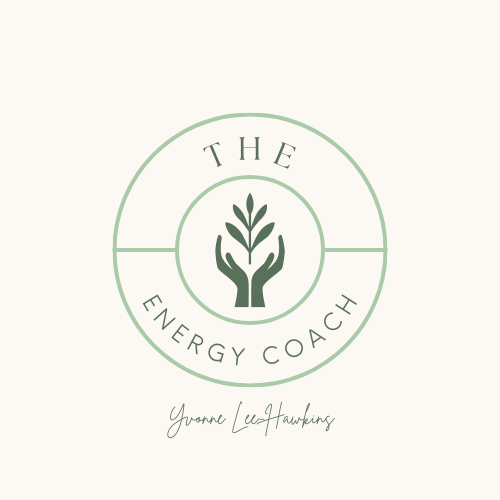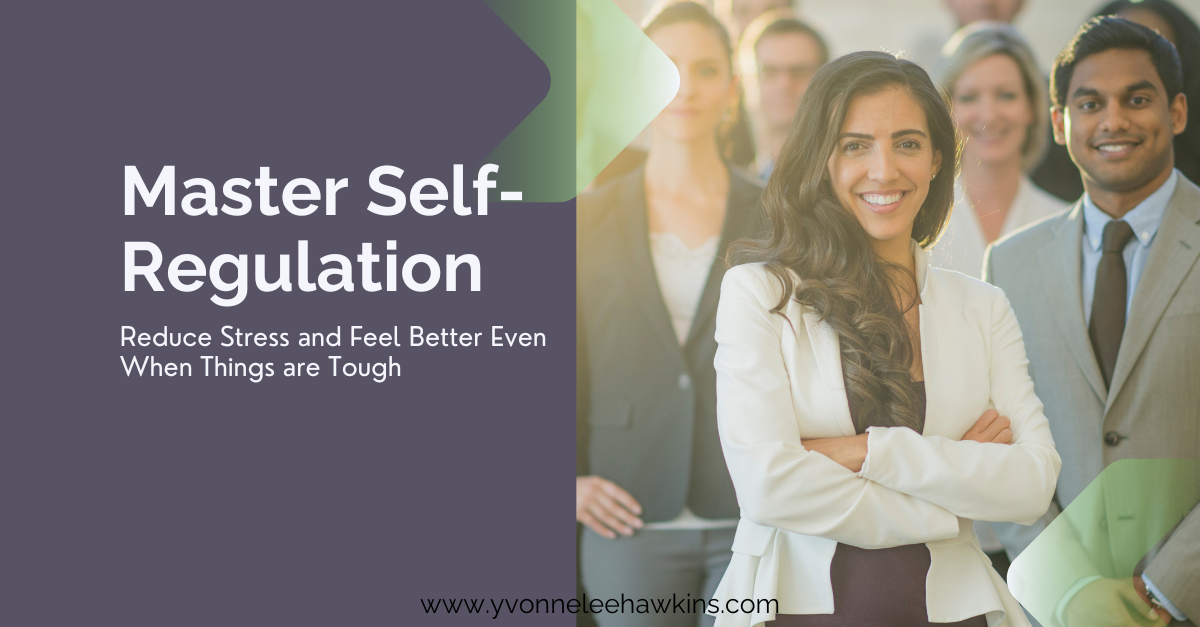Reduce Stress and Feel Better Even When Things are Tough
This week’s topic is reader submitted. Thank you to the
Wellness Wednesday Community! Keep showing up and letting me know what’s
important to you.
Have you ever felt your heart race and your breath quicken
in a stressful situation, unable to calm down? Or found yourself snapping at
someone you care about, only to regret it moments later? These moments are
signs that your nervous system has shifted into “fight or flight”
mode, and without effective self-regulation strategies, you can find yourself
overwhelmed and emotionally drained. On a recent DOAC podcast Dr. Joe Dispenza
talked about the fact that as humans, we all react. “But for how long?” was his
question. How long do we let our emotions and stress get the best of us, before
we regain control?
Here’s the good news: mastering self-regulation can
transform how you handle stress, improve your relationships, and even boost
your overall well-being, and it doesn’t take long to learn. Once you get these
strategies down, you’ll still react, but you’ll regain emotional control much
more quickly. Then, you can CHOOSE whether to stay amped or frustrated or angry
or sad. You’ll have emotional freedom.
The Power of Self-Regulation
Self-regulation is the ability to manage your thoughts,
emotions, and behaviors in ways that align with your goals and values. It’s
what allows you to stay calm in a heated conversation, refocus after a setback,
and remain composed under pressure when you choose to.
When you strengthen your self-regulation skills, you can:
- Reduce
anxiety and overwhelm
- Improve
focus and mental clarity
- Foster
better relationships
- Make
healthier decisions under stress
But mastering this skill starts with recognizing what
triggers your stress response. First you
have to become aware, so that you can take control.
Step one: Identifying Your Triggers
Understanding what sets you off is key. Triggers can be
physical, mental, or emotional and very often coming from your
environment. While the factors may be
coming from your environment, you have to realize the triggers are IN you. For
example, imagine a scenario where someone walking past you drops a glass of
water that spills up on you. You could
react in a number of ways. You could get angry that you are now wet. You could
feel sorry for the person who just had a clumsy accident. You could laugh
because it’s such an odd thing to happen. You could react in a number of ways,
all depending on your internal triggers.
Here are examples of the types of triggers:
- Physical
Triggers: Hunger, fatigue, pain, or hormonal shifts can increase
irritability and reduce your ability to think clearly.
- Mental
Triggers: Negative thought patterns, self-doubt, or mental overload (aka
overwhelm) can heighten your stress response.
- Emotional
Triggers: Past traumas, unresolved emotional wounds, or interpersonal
conflicts can stir strong reactions.
What you can do. Awareness is the first key step. Spend
a few days tracking your emotional responses. Each time you feel anxious,
angry, or upset, write down what happened just before those feelings arose.
Patterns will emerge, helping you identify common triggers.
For example, a client I worked with, let’s call her “Sarah,”
noticed she would get nervous and begin to self-doubt herself whenever she had
a meeting with a certain leader. Recognizing this helped her develop a strategy
to pause and reset before those meetings to put herself in a state where she
didn’t get intimidated by this leader.
After a while, she no longer got nervous, and even better, the
relationship with that leader improved because she wasn’t giving off frantic
nervous energy. Instead, this leader saw her as a valuable member of the team.
Step 2: Interrupt the Pattern
Once you recognize your triggers, the next step is to break
the automatic reaction cycle. This requires creating a mental pause — a moment
to step back before reacting. For example, one thing Sarah did before her
meetings with this person was to take a few minutes to shake off the nerves and
do some deep breathing. This helped her come into the meeting in a different,
more calm and relaxed state.
Step 3: Build Long-Term Resilience
Interrupting stress in the moment is powerful, but building
resilience is what keeps your nervous system stable in the long run. As you practice interrupting these patterns,
you’ll automatically be able to do this when stressful things come up without
having to think about identifying and pausing. You start to automatically do
this.
Practical Techniques to Regain Control
When you notice yourself becoming triggered, try one of
these techniques:
- Name
It to Tame It: When overwhelmed, simply naming your emotion (“I’m
feeling frustrated”) activates the brain’s rational center, giving you
more control. You go from the amygdala (the reptilian part of your brain
that sees danger) and move into the prefrontal cortex (the logical part of
your brain that can solve problems).
- Box
Breathing: Inhale for 4 counts, hold for 4 counts, exhale for 4
counts, and hold for 4 counts. Repeat until your mind feels calmer. This
breathing is often taught in the military because it works so well.
- 5-4-3-2-1
Grounding Exercise: Identify 5 things you can see, 4 you can touch, 3
you can hear, 2 you can smell, and 1 you can taste. This anchors you in
the present moment and brings you back to the present environment. Bonus
points if you experience joy or gratitude about any of the things you name.
- The
“Psychological Sigh”: This type of breathwork, also known as
the “physiological sigh” or “double inhale,” is a
breathing technique involving two quick inhales followed by a long exhale,
often used to reduce stress and anxiety by activating the parasympathetic
nervous system. Practicing this or any kind of breath control when you’re
calm helps your body remember these techniques in moments of stress.
- Movement:
Regular exercise releases endorphins and keeps your nervous system
balanced. Try going for a short ten-minute walk after a frustrating
situation and notice how the movement helps you literally “move past” that
scenario. I often find I also get
clearer, and problem solve better during and after a walk.
- Journaling:
Writing down your thoughts helps you process emotions rather than suppress
them. A lot of people roll their
eyes when they hear “journaling,” but by writing down what you feel in the
moment, it enables you to come back later and see it with a different
perspective. It can give you great insight.
- Connection:
Regularly connecting with supportive friends or family members provides a
buffer against stress. Why is
that? Well, we are tribal animals,
wired for connection. Evolutionarily, if we were left alone in the
wilderness, our chance of survival, especially as a young child, would be
almost zero. By sharing our concerns and struggles, it does a few things
(1) helps us realize we are not alone, (2) gives us encouragement to get
through hard times, and (3) gives us confidence, knowing that even when
things are hard, we have people who care about us.
“Sarah” used a combination of these things. She started
using box breathing the moment she felt her anxiety spike at work. This short
pause helped her respond thoughtfully rather than react emotionally when she went
into the meeting. Additionally, she often went for a walk before meeting with
this person and also shared her concerns with me, her coach. As a result, she
started to notice fewer emotional triggers and a greater sense of calm, even in
challenging moments with this person.
Why This Matters
When you build self-regulation skills, you become the calm
in the storm rather than being swept away by it. You gain control over your
reactions, allowing yourself to respond thoughtfully rather than impulsively.
This shift doesn’t just benefit you, it positively impacts your work
performance, your relationships, and overall sense of peace.
Your Challenge for This Week
Identify one common trigger in your life. When it appears,
practice a calming technique like box breathing or the 5-4-3-2-1 grounding.
Then reflect on how this new approach changes your experience.
By taking control of your responses, you’re not just
reducing stress, you’re empowering yourself to live with greater calm, clarity,
and confidence. Try it and let me know what you notice!
***
Did this topic add value to you? Please like and
subscribe if you want more topics like this, or DM me. I always love
suggestions and feedback!
And if you are too burned out and overwhelmed to even
begin to use any of these strategies it might be time to get some help. Find a
coach, therapist, or doctor who can help you reverse out of the physical,
mental, and emotional symptoms of burnout so you can get back to living in life
you love.
Remember, Self-care isn’t selfish…it’s required!
Yvonne Lee-Hawkins, IPHM, is a holistic Leadership and
Wellness coach, stress strategist, and writer, who spent 20 years in corporate
and leadership functions. When she is not working, she loves to go on nature
adventures with her family, in the Pacific Northwest where they call home. You
can find out more on her website,
or follow her on LinkedIn,
Medium, or Instagram.
If you want some help regulating yourself better, or with
general wellness, schedule
a call here.
Lastly, sharing is caring. If you know someone who would
benefit from this, please share it with them!

